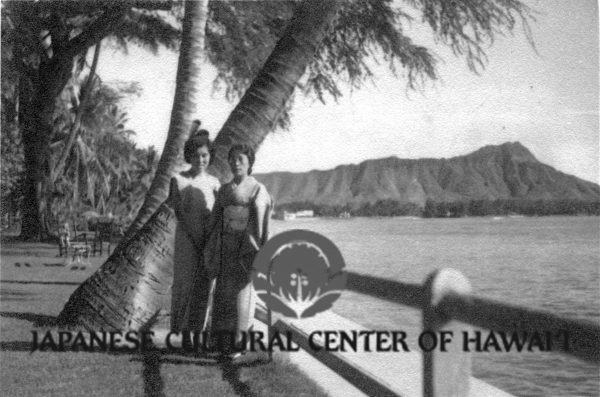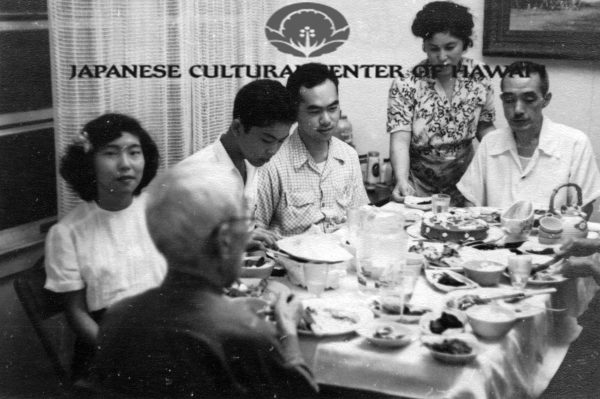Group Media & Photos

Ishiko Mori, left, at the Halekulani Hotel, Honolulu, 1936. JCCH/Iga Mori Archival Collection.

Home in Nuuanu after internment, the Mori family eats dinner together, ca. 1945. Clockwise from left: father Dr. Iga Mori, daughter Pearl, sons Ramsey and Victor, Ishiko Mori, and Motokazu Mori. JCCH/Victor Mori Archival Collection.

Dr. Ishiko Shibuya Mori. JCCH/Victor Mori Archival Collection.
Internment Locations
Arrested: December 1941
U.S. Immigration Station, Honolulu, Oahu Island
December 1941 - January 1942
Sand Island Internment Camp, Honolulu, Oahu Island
January 1942 - October 1942
A group of twenty-three Issei men were sent aboard the U.S. Army transport ship the Ernest Hinds for incarceration in U.S. Army and Department of Justice camps on the Mainland. The internees were sent together from camp to camp. Some were paroled to War Relocation Authority camps and reunited with family members, others were transferred for repatriation to Japan.
Also in this transfer group were two Issei women: a nun, Kanzen Ito, and a physician, Ishiko Mori. The women were kept apart from the male internees and had different internment sequences from them.
Sharp Park Detention Station, California
October 1942 - July 1943
Crystal City Family Internment Camp, Texas
August 1943 - December 1945
Returned to Hawaii: December 1945
Arrived in Honolulu with about 775 other internees aboard the military troopship the Shawnee.
Physician Ishiko Shibuya arrived in Hawaii in 1927 and worked at the Japanese Hospital in Honolulu. Several years later, she married widower Motokazu Mori, a surgeon and son of one of the hospital's founders, prominent Issei physician Iga Mori.
Several days before December 7, 1941, Ishiko Mori conducted an interview of her husband on the state of affairs in the territory for the Japanese Yomiuri newspaper. With the bombing of Pearl Harbor, the actions of the Moris came under suspicion and the couple were arrested as possible spies.
Ishiko Mori thus became one of only eight Hawaii women to be arrested and interned on the Mainland. Unlike the women who entered Mainland internment as a way to reunify their families, these women had been arrested and incarcerated. Mori and the Buddhist nun Kanzen Ito were sent with the Seventh Transfer Group. Six women had been sent several months earlier in the Fourth Transfer Group; they were Kiku Horibe, Miyuki Kawasaki, Yoshie Miyao, Yuki Miyao, Haru Tanaka, and Tsuta Yamane.
After nearly two years of separation, Ishiko Mori was reunited with her husband in Crystal City, where the couple worked at the camp hospital. After the war, a U.S. congressional commission would determine that the Mori interview had not been coded intelligence and that the Moris had not engaged in espionage.
